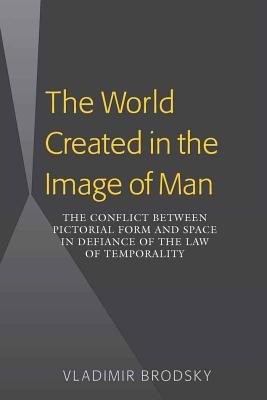
- We will send in 10–14 business days.
- Author: Vladimir Brodsky
- Publisher: Peter Lang Us
- ISBN-10: 1433107791
- ISBN-13: 9781433107795
- Format: 15 x 22.6 x 1.5 cm, kieti viršeliai
- Language: English
- SAVE -10% with code: EXTRA
The World Created in the Image of Man; The Conflict between Pictorial Form and Space in Defiance of the Law of Temporality (e-book) (used book) | bookbook.eu
Reviews
Description
The World Created in the Image of Man investigates the development of the third dimension in painting from the dramatic moment when spatial construction becomes charged with an external force antagonistic to the effort of forms, or human figures, to preserve their permanence. The competitive contact between the external and internal worlds represented in the picture brings a vital element to the unfolding of art as it occurs in both the West and the East. As the analysis of masterpieces from different historical periods and cultures demonstrates here, this vital impulse becomes a necessary part of pictorial composition and the measure of the quality of the work of art. It can reveal itself in a limitless and disparate variety of subject matter: a scene from Japanese court life, as depicted in the illustrations of the early twelfth century to the novel The Tale of Genji; a representation of the maternal feeling of the Virgin anticipating the fate of her child in Byzantine icon painting; Raphael's universal interior in The School of Athens; Rembrandt's allegory of historic continuity in Aristotle with the Bust of Homer. The progression of this dynamic eventually leads to the surrender of form to space with the Impressionists; and to the conclusion of the book, which considers Postmodern art in the form of the installation, where the emphasis is put on the unprecedented role of the viewer as a component of the work, and which suggests an environment that is totally alien, or even hostile to him. Art historians, students of art history and the educated general reader with an interest in painting will find this book a rewarding and stimulating read.EXTRA 10 % discount with code: EXTRA
The promotion ends in 22d.18:44:48
The discount code is valid when purchasing from 10 €. Discounts do not stack.
- Author: Vladimir Brodsky
- Publisher: Peter Lang Us
- ISBN-10: 1433107791
- ISBN-13: 9781433107795
- Format: 15 x 22.6 x 1.5 cm, kieti viršeliai
- Language: English English


Reviews